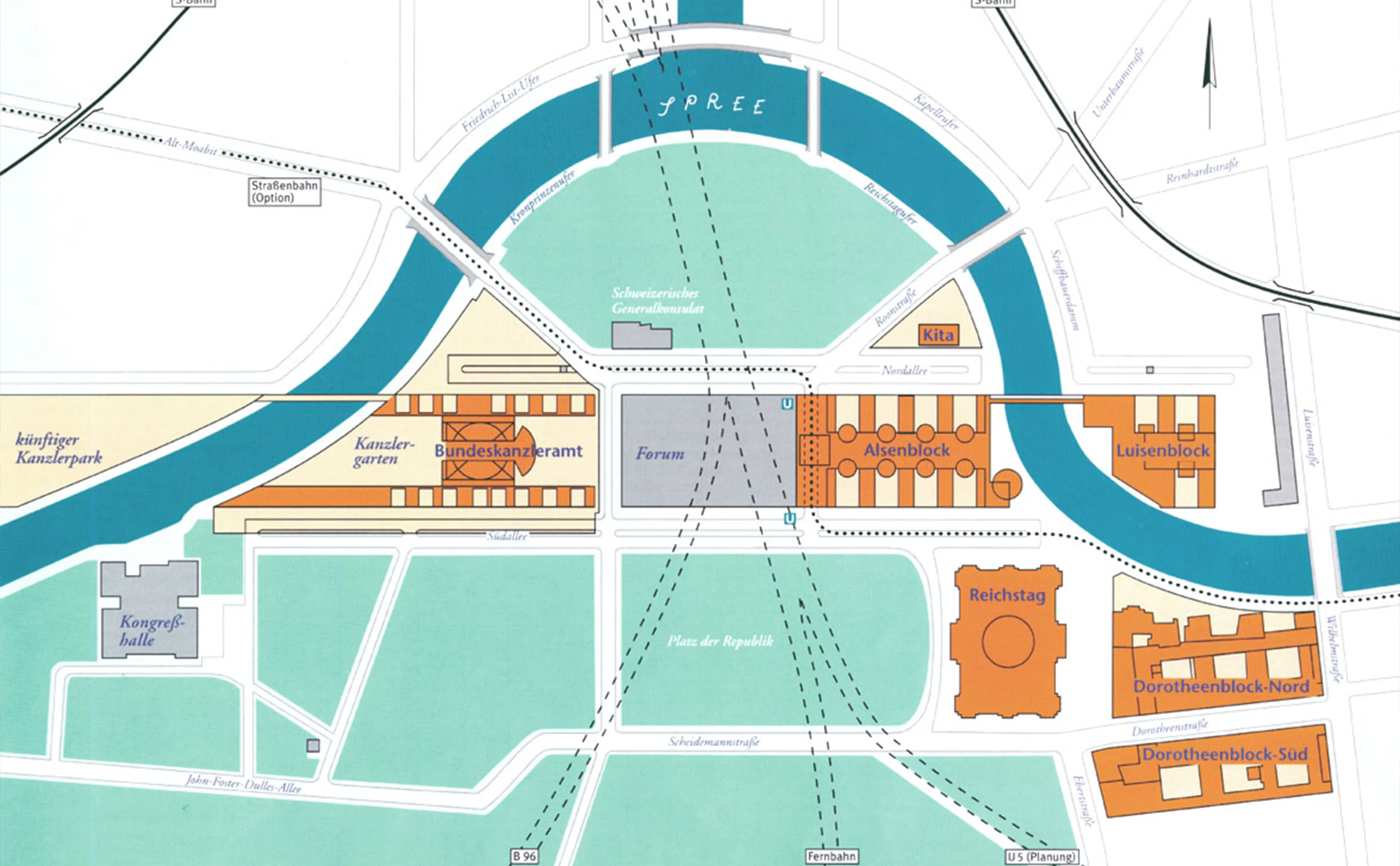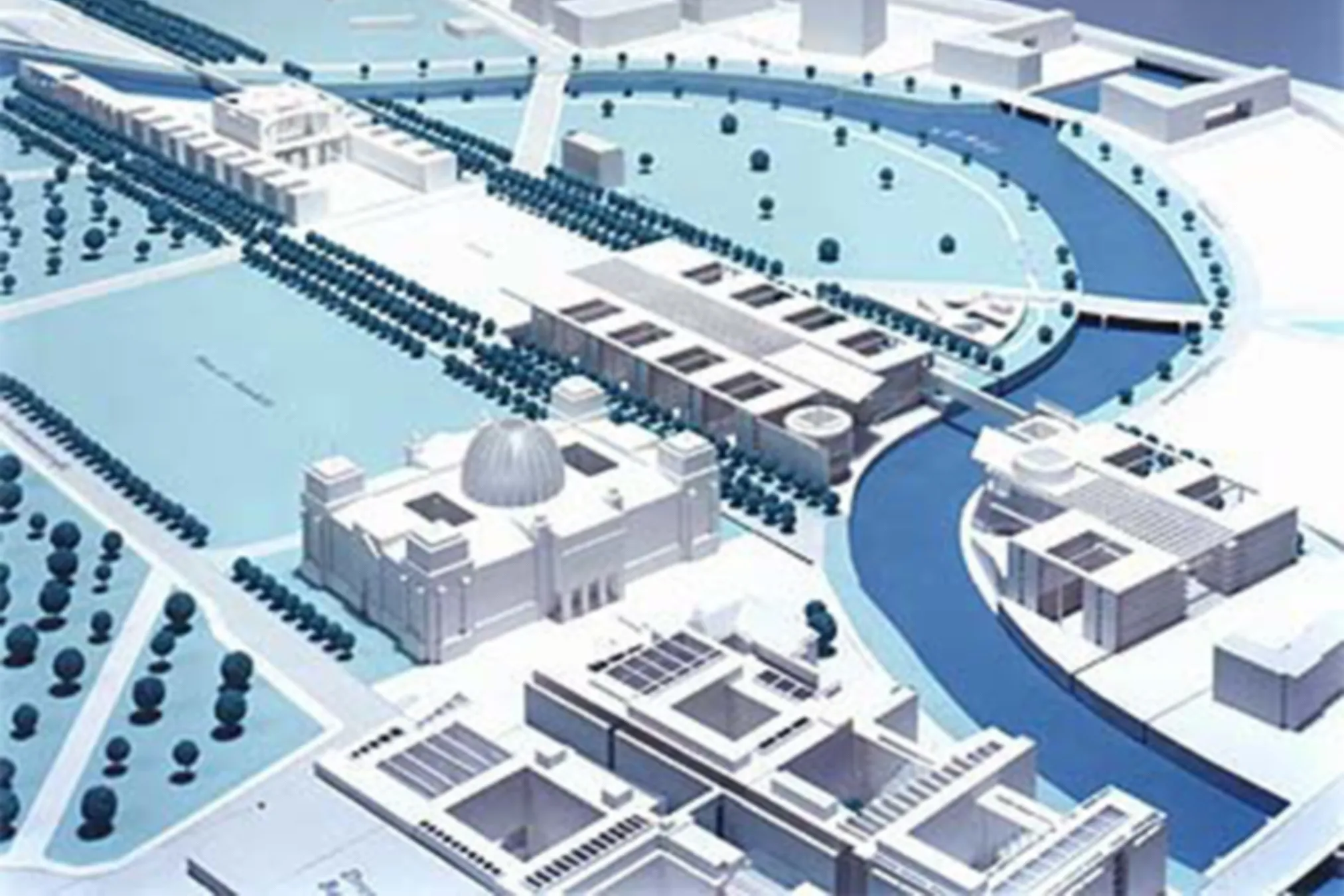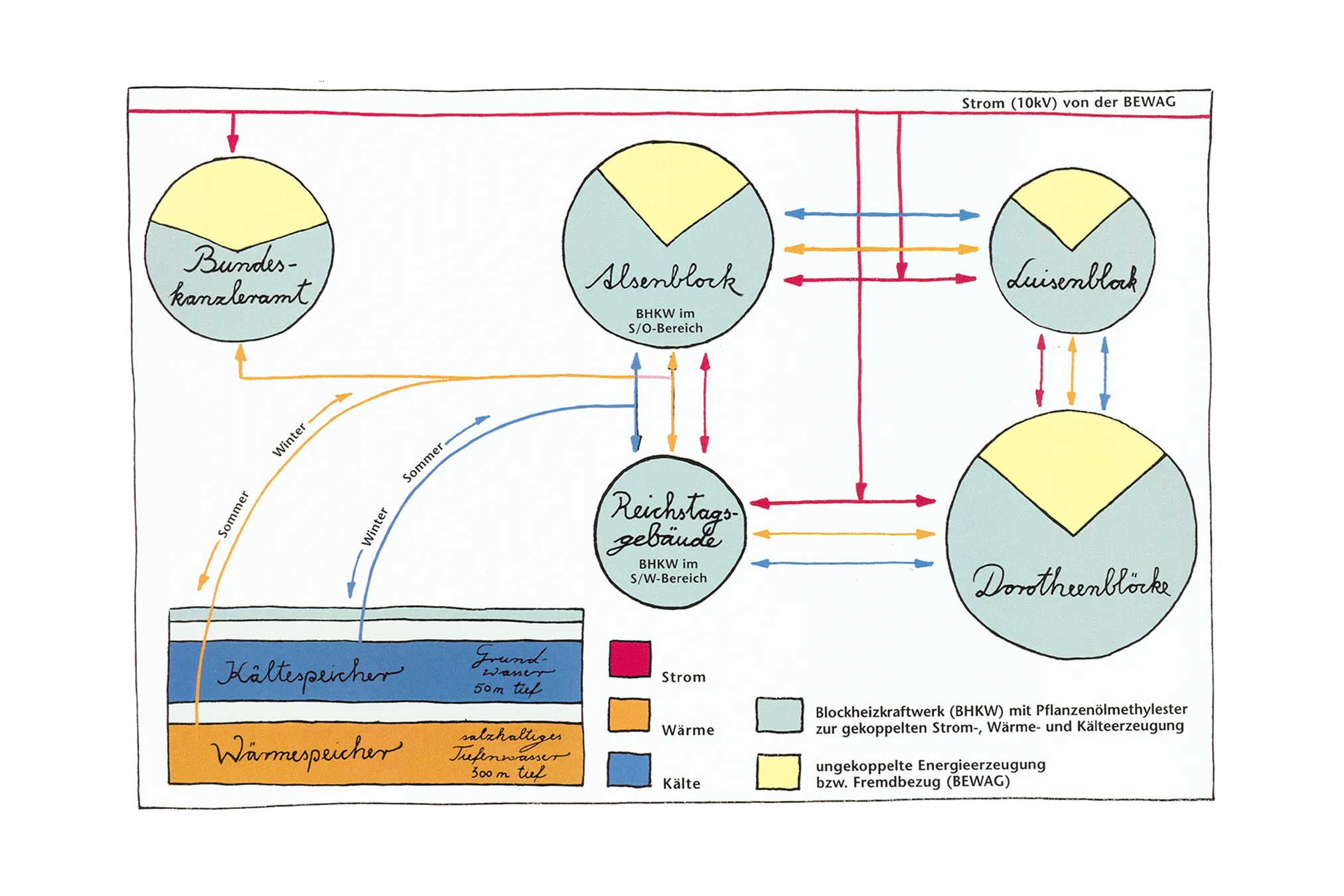Technikverbund Parlamentsbauten Berlin 1.0
Developing an innovative technology network
Bundesbaugesellschaft Berlin mbH
1-8
1993 - 1997
1996 - 1999
On September 10, 1993, the Federal Republic of Germany established the Bundesbaugesellschaft Berlin mbH to coordinate the federal construction projects in Berlin’s Spreebogen area. The technology network included the Reichstag building as well as the new construction of parliamentary and government buildings (including the Federal Chancellery, Jakob Kaiser Building, Paul Löbe Building and Marie-Elisabeth Lüders Building) and their underground infrastructure systems.
The aim of the TVP was to implement forward-looking, environmentally friendly energy concepts with high energy efficiency and innovative building technologies. In addition to cost considerations, the focus was on supply reliability, ecological compatibility and serving as a technological role model. The original target to cover at least 15% of the energy demand from renewable sources was significantly exceeded, leading to a substantial reduction infossil fuel consumption and CO₂ emissions.
There is an energy network between the buildings of the German Bundestag in the Spreebogen to balance the different demand patterns of the individual buildings and to improve the utilization of energy generation machines and the aquifer heat and aquifer cold storage systems.
This network is an important technical basis for the entire energy supply concept. In conjunction with the other components, it makes it possible to exploit the existing potential for the use of waste heat from electricity production (combined heat and power), high utilization of the machines with higher CHP output (economic efficiency) and control of energy supply failures despite the absence of backup machinery by dividing the total output between different producers (diversification).
Bundesbaugesellschaft Berlin mbH
1-8
1993 - 1997
1996 - 1999






